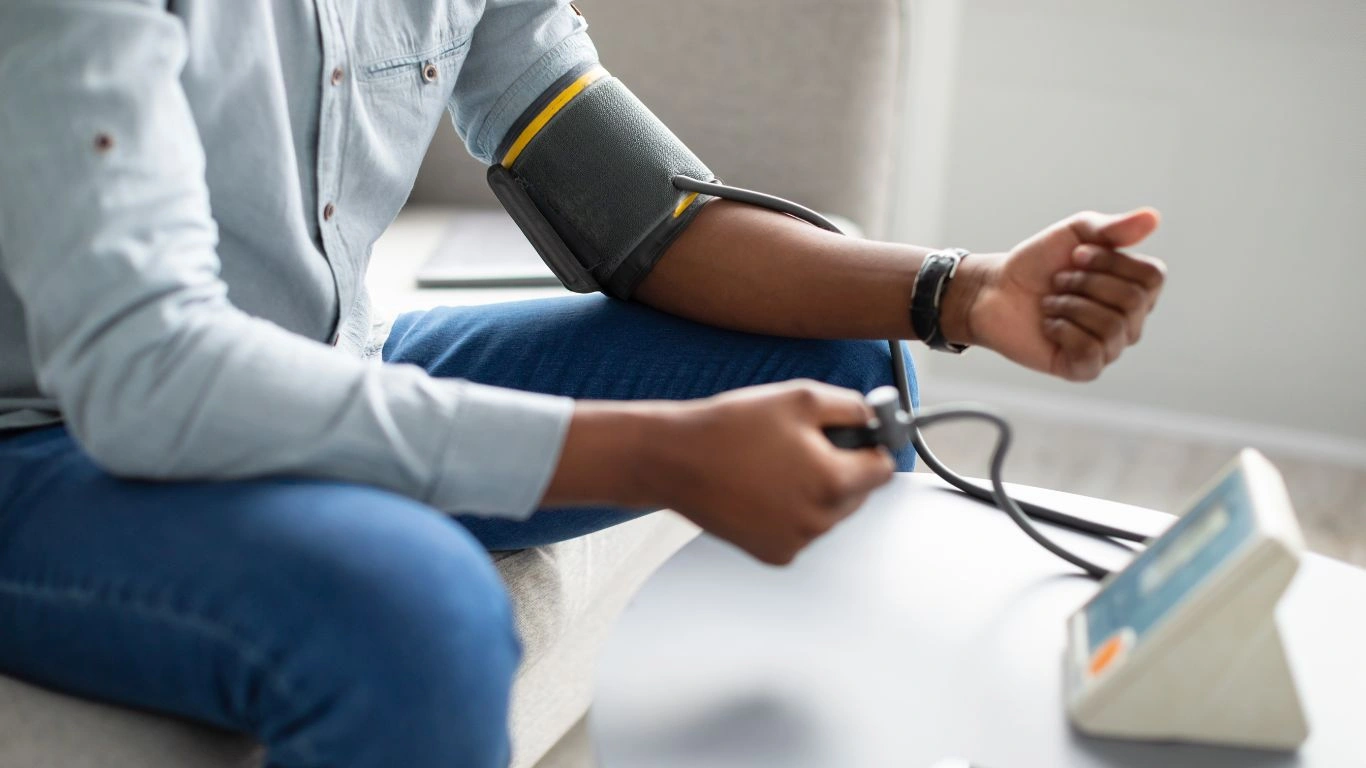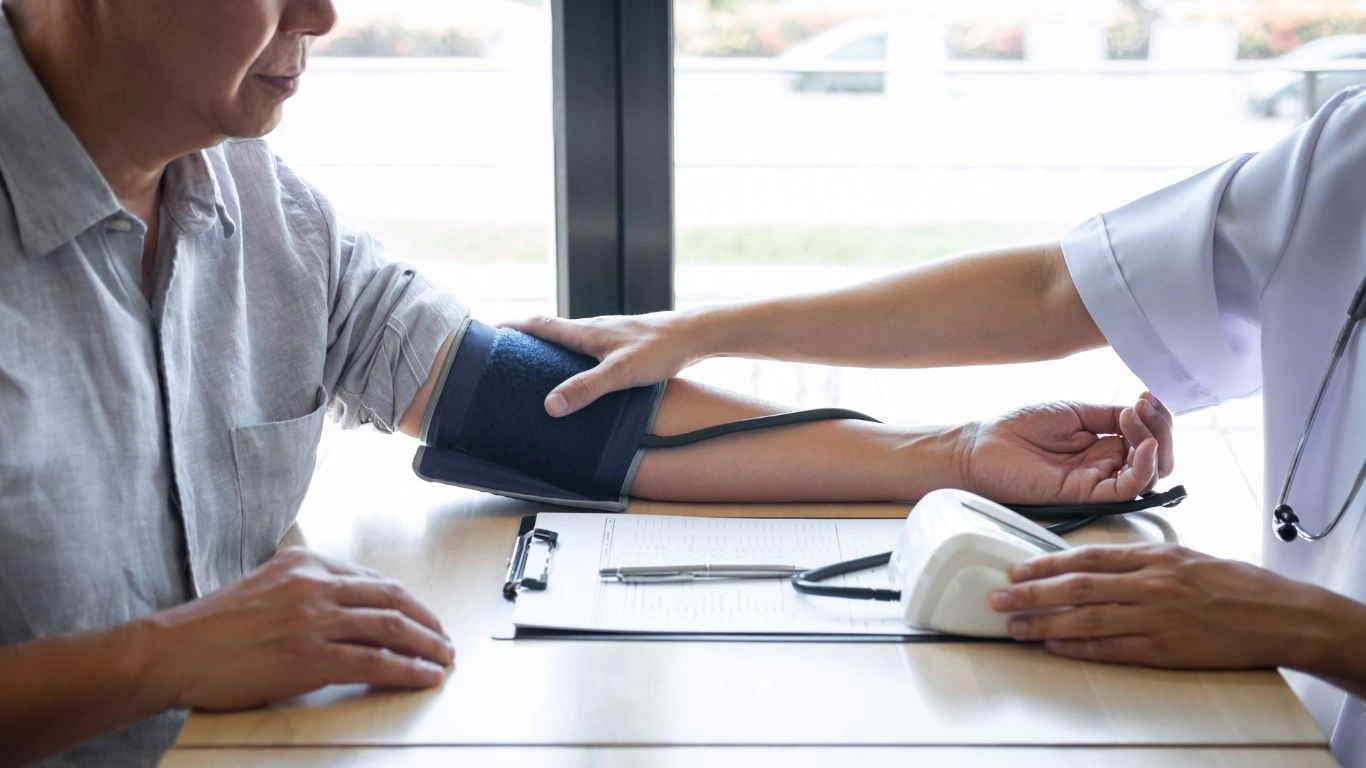Best Juicing Recipes for Hypertension That Truly Lower Blood Pressure
When patients ask me about managing high blood pressure beyond medication, my mind often jumps to one vibrant, refreshing solution—juicing. And not just any juice. We’re talking about the best juicing recipes for hypertension—flavorful, nutrient-packed combinations that support heart health in ways most folks don’t even realize. As an internal medicine physician with years focused on hypertension, I’ve seen firsthand how even small dietary shifts can lower blood pressure readings and reduce reliance on meds. Juicing has become a game-changer for many of my patients, and honestly, I’ve adopted it in my own routine too. Let’s get into it, and I’ll share what’s worked both in my clinic and my kitchen.
Why Juicing Matters for Blood Pressure

If you’re like many of my patients, your mornings are busy, your meals are rushed, and veggies somehow disappear from your plate by the end of the day. Sound familiar? That’s where juicing shines. With a single glass, you can flood your body with potassium, magnesium, antioxidants, and nitrates—the nutrients that help relax blood vessels, balance sodium levels, and improve circulation.
And no, I’m not suggesting you ditch your meds and chug beet juice like it’s a miracle elixir. But I’ve had folks cut their systolic pressure by 10–15 points in a matter of weeks just by integrating the right juices. That’s powerful.
What Makes a Juice “Blood Pressure Friendly”?
Not all juices are created equal, especially when you’re targeting hypertension. Some store-bought blends are loaded with added sugar, which is the last thing we want. When crafting the best juicing recipes for hypertension, here’s what I look for:
- High potassium content: Helps balance sodium and reduces tension in blood vessel walls.
- Natural nitrates: Found in beets and leafy greens, they help dilate blood vessels and improve flow.
- Low sugar load: Even fruit juices can spike blood sugar if overdone, which indirectly impacts blood pressure.
- Antioxidant-rich ingredients: Think berries, pomegranate, ginger—ingredients that reduce inflammation and oxidative stress.
I always remind my patients to treat juice as a supplement, not a meal replacement. Pair it with a protein-rich snack or breakfast to stabilize blood sugar and get the best cardiovascular impact.
Juicing vs. Whole Veggies—Which Is Better?

I get this question a lot: “Shouldn’t I just eat the vegetables?” And sure, in a perfect world where we all had time to chew our way through five cups of greens daily, that would be ideal. But the reality? Juicing is often more doable—and enjoyable. Especially for people who just aren’t big fans of salads.
That said, there’s a trade-off. Juicing strips out the fiber, which plays a role in satiety and blood sugar control. That’s why I like to think of juicing as a complement to a fiber-rich diet. Add chia seeds to your juice, eat whole grains later, or toss some pulp into your muffins—yes, I do that!
Pro Tips from My Clinic (and Kitchen)
- Start with a base: Cucumber, celery, or spinach are hydrating and low in sugar. They make the perfect foundation for any juice combo.
- Limit fruits to 1 per serving: Apples, oranges, or berries give a touch of sweetness without overwhelming your blood sugar.
- Always include something red or green: Beets and kale are MVPs for lowering blood pressure naturally.
- Add a punch of flavor: A thumb of ginger or a squeeze of lemon can turn a bland blend into something crave-worthy.
I’ve had patients who were skeptical at first—some even told me, “Doc, I don’t do green stuff.” Fast forward a few months, and they’re texting me new combos they’ve come up with. That’s the beauty of this approach: it’s sustainable, enjoyable, and empowering.
Best Juicing Recipes for Hypertension (Coming Up Next)

Next up, we’ll get into specific juicing recipes that I recommend regularly to patients—and make for myself on rotation. These are easy to prep, delicious, and most importantly, backed by science and experience. Trust me, your tastebuds (and your arteries) are in for a treat.
Top 3 Best Juicing Recipes for Hypertension (Tried & Loved)

Alright, now let’s get into the fun stuff—actual juice recipes that have helped my patients manage their blood pressure and that I personally enjoy. These blends are packed with the right balance of nutrients and flavors, and they’re simple enough for even the busiest of mornings. I’ve shared these with everyone from long-time hypertensive patients to folks just looking to cut back on sodium and sugar. They’re always a hit.
1. The Beet Booster
This one is a classic. Beets are rich in nitrates, which your body converts into nitric oxide—a compound that relaxes and widens blood vessels, helping lower blood pressure.
- 1 small raw beet (peeled and chopped)
- 1 carrot
- 1/2 apple (for sweetness)
- 1-inch piece of fresh ginger
- 1/2 lemon (peeled)
Why it works: This blend hits the sweet spot of earthy and zesty. The ginger adds a kick while also acting as a natural anti-inflammatory. I’ve seen this one drop systolic numbers by 5–10 points in some patients after just a few weeks of regular use (paired with a sensible diet, of course).
2. Green Glow Tonic
This recipe is my go-to when I feel bloated or just need a serious nutrient reset. It’s loaded with potassium and magnesium—both of which help counter the effects of sodium.
- 1 cucumber
- 2 celery stalks
- 1 handful of spinach or kale
- 1/2 green apple
- 1/2 lemon (peeled)
- A few mint leaves (optional, but refreshing!)
Why it works: This one is ultra-hydrating and great for flushing out excess sodium. I recommend this blend especially for patients on the saltier end of the diet spectrum (you know who you are). Plus, celery contains phthalides—compounds that may relax artery walls and increase blood flow.
3. Berry Beet Citrus Blush
Sometimes, I just want a juice that feels like a treat but still does the work of lowering blood pressure. That’s where this berry-packed blend comes in.
- 1/2 cup strawberries
- 1/2 small beet
- 1 orange (peeled)
- 1/2 cup pomegranate juice (unsweetened if possible)
- 1/4 tsp cinnamon (optional but heart-healthy!)
Why it works: Berries are rich in flavonoids and antioxidants that protect your blood vessels, while pomegranate juice has been shown in studies to help reduce both systolic and diastolic pressure. Patients love this one because it feels indulgent but it’s seriously therapeutic.
When & How to Juice for Maximum Impact

Over the years, I’ve noticed that timing matters almost as much as the ingredients. Some of my patients get the best results when they drink their juice in the morning on an empty stomach. Others find it works better as an afternoon pick-me-up instead of coffee or a sugary snack.
My Rule of Thumb:
- Morning juice: Go for green or beet-based recipes—kickstarts your metabolism and hydrates you after sleep.
- Afternoon juice: Choose citrus or berry blends to fight inflammation and keep energy levels stable.
- Evening juicing: I don’t usually recommend this unless it’s a light blend. You don’t want too much sugar (even natural) before bed.
Pro tip: If you’re using a juicer and you end up with leftover pulp, don’t toss it! Mix it into soups, muffins, or even stir it into oats. That’s how I sneak fiber back in without wasting anything.
Common Juicing Mistakes (And How to Avoid Them)

Let’s be real—juicing can go sideways fast if you’re not paying attention. Here are a few pitfalls I see way too often (and have made myself back when I started):
- Too much fruit: Yes, fruit is natural, but too much can spike blood sugar, which can lead to insulin resistance and indirectly raise blood pressure. Balance is everything.
- Skipping greens: Greens are where the minerals live. I always say, “No green, no gain.”
- Relying solely on juice: Juicing should complement your meals, not replace them. I still want you eating real meals with fiber, protein, and healthy fats.
- Inconsistent habits: A juice once a week isn’t going to cut it. Like any lifestyle change, consistency is where the magic happens.
I’ve had a few patients come back a month later saying, “I tried it a couple times, but didn’t notice anything.” Once we got them into a regular rhythm—3 to 4 times a week—they started seeing real changes in both their numbers and energy levels.
Stick with it, mix up your ingredients, and remember—this isn’t just about lowering blood pressure. It’s about building a lifestyle that supports your heart, your mood, and your long-term health. That’s something a little juice can definitely help with.
Personalizing Juicing for Your Blood Pressure Journey

Here’s the truth I always share with my patients: there’s no one-size-fits-all approach when it comes to managing hypertension. That’s why I encourage personalizing your juicing habits. The best juicing recipes for hypertension are the ones that work *for you*—based on your taste, health goals, and lifestyle. What works wonders for one person might not hit the same notes for another. And that’s okay.
For instance, I have one patient—let’s call her “Lisa”—who can’t stand beets. Just the smell puts her off. So we found a workaround using red cabbage and berries to mimic the same nitrate-rich effect with a flavor profile she actually enjoyed. Another patient, “Mark,” had kidney issues, so we had to carefully moderate potassium-rich greens like spinach. The beauty of juicing is its flexibility. We can adapt and fine-tune as we go.
Here’s how I guide patients to customize their own juices:
- Track how you feel: Energy levels, blood pressure readings, digestion—all of it. It gives clues on what’s helping.
- Pay attention to your labs: Kidney function, electrolytes, and blood sugar should guide your choices.
- Choose flavors you genuinely enjoy: If you hate kale, skip it. There are plenty of other heart-healthy greens.
Juicing should never feel like punishment. It should be something you look forward to—your little daily dose of nourishment that fuels your body and spirit.
Juicing + Lifestyle: The Full Picture

Now, I wouldn’t be doing my job as a physician if I didn’t zoom out for a second. Yes, juicing is powerful. But it’s just one piece of the blood pressure puzzle. I always encourage a full lifestyle approach:
- Stay active: Even a brisk 30-minute walk most days can lower your systolic pressure significantly.
- Cut back on salt (and processed food): It’s amazing how hidden sodium sneaks into everything from sauces to snacks.
- Get quality sleep: Poor sleep ramps up stress hormones—hello, high BP.
- Hydrate: Don’t just rely on juice. Water is still the MVP of your cardiovascular system.
One of my longtime patients, James, lowered his blood pressure from 148/92 to 122/76 within four months. It wasn’t magic—it was small, consistent changes: daily green juices, cutting down on soda, switching to home-cooked meals, and walking every morning. That’s the kind of transformation that lights me up as a doctor.
Is Juicing Safe for Everyone?
For most folks, yes. But there are a few situations where you’ll want to check in with your doctor—especially if you have:
- Chronic kidney disease
- Diabetes (watch those fruit sugars!)
- Medications that affect potassium or fluid levels
I always review juicing plans with my patients’ full medical picture in mind. If you’re not sure where you stand, just bring it up at your next visit. Better to personalize than assume.
Final Thoughts from the Exam Room & Kitchen Counter
After years of managing hypertension in patients, and frankly, battling my own genetics and family history of high blood pressure, I can say this with confidence: small, delicious, consistent actions matter. Whether it’s a glass of beet-ginger juice in the morning or swapping out chips for carrot sticks in the afternoon, it all counts.
Juicing isn’t a cure—it’s a tool. A vibrant, colorful, nutrient-packed tool that helps you reclaim some control over your cardiovascular health. It empowers you to participate in your healing journey rather than just passively take pills. And when patients feel empowered, they stay motivated. That’s where the real results start to build.
So go ahead—experiment, have fun with flavors, and treat your juicer like your personal wellness lab. Your heart will thank you for it.
References
- American Heart Association
- National Center for Biotechnology Information (NCBI)
- Centers for Disease Control and Prevention
- American Gastroenterological Association
Disclaimer
This article is intended for informational purposes only and does not substitute for professional medical advice, diagnosis, or treatment. Always consult your physician or qualified health provider with any questions you may have regarding a medical condition. As an Internal Medicine physician, I provide general guidance, but individual recommendations may vary based on your unique health profile.

Dr. Gwenna Aazee is a board-certified Internal Medicine Physician with a special focus on hypertension management, chronic disease prevention, and patient education. With years of experience in both clinical practice and medical writing, she’s passionate about turning evidence-based medicine into accessible, actionable advice. Through her work at Healthusias.com, Dr. Aazee empowers readers to take charge of their health with confidence and clarity. Off the clock, she enjoys deep dives into nutrition research, long walks with her rescue pup, and simplifying medical jargon one article at a time.






